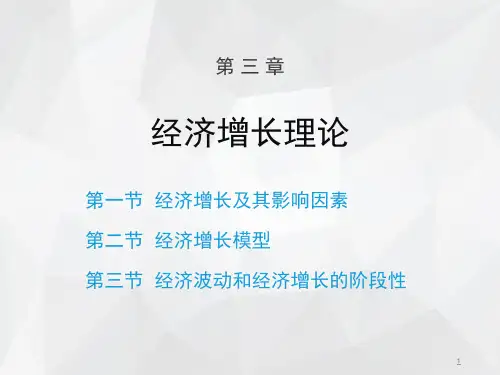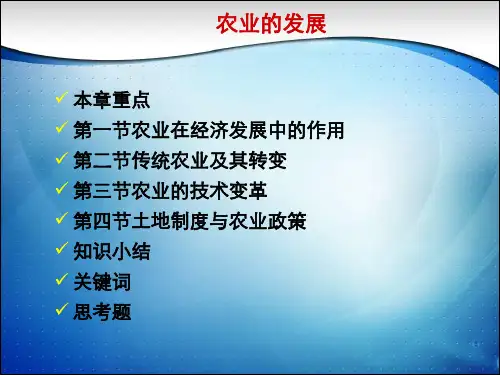2005 25 22 20 20 20 19 20 17 26 25 20 24 30 20 23 19 23 28 16 20 17 18
1251.5
1.2.3 经济发展的衡量指标
❖ 1.世界银行使用人均GNP这一简单的指标来衡量各 个国家的发展水平。优点:易于操作;缺陷:因为 它只是一个平均值,因此不能反映收入的分配状况。
Industry
Services
2005 13 0 4w 22 10
2005 46 10 28w 28 37
2005 41 90 68w 50 53
13
41
46
7
32
62
12
36
52
13
45
42
8
32
60
8
32
60
11
41
48
19
27
54
17
32
51
2
26
72
Household final cons. expenditure
1.1.3. 发展中国家的基本特征
1. 收入水平低下 2. 生活水平低下 3. 生产率水平低下 4. 人口增长率高、赡养负担重 5. 失业问题严重 6. 农业部门和农村人口所占比重大 7. 初级产品出口比重大而且品种单一 8. 二元经济结构显著 9. 国际关系中处于受支配的地位
9
劳动生产率的国际比较
❖ United Kingdom;
United States
6
7
Note: This table classifies all World Bank member economies, and all other economies with populations of more than 30,000. Economies are divided among income groups according to 2006 GNI per capita, calculated using the World Bank Atlas method. The groups are: low income (LIC), $905 or less; lower middle income (LMC), $906–3,595; upper middle income (UMC), $3,596–11,115; and high income, $11,116 or mor8e.


![发展经济学ppt (14)[28页]](https://uimg.taocdn.com/6bb28b02c1c708a1294a44af.webp)






